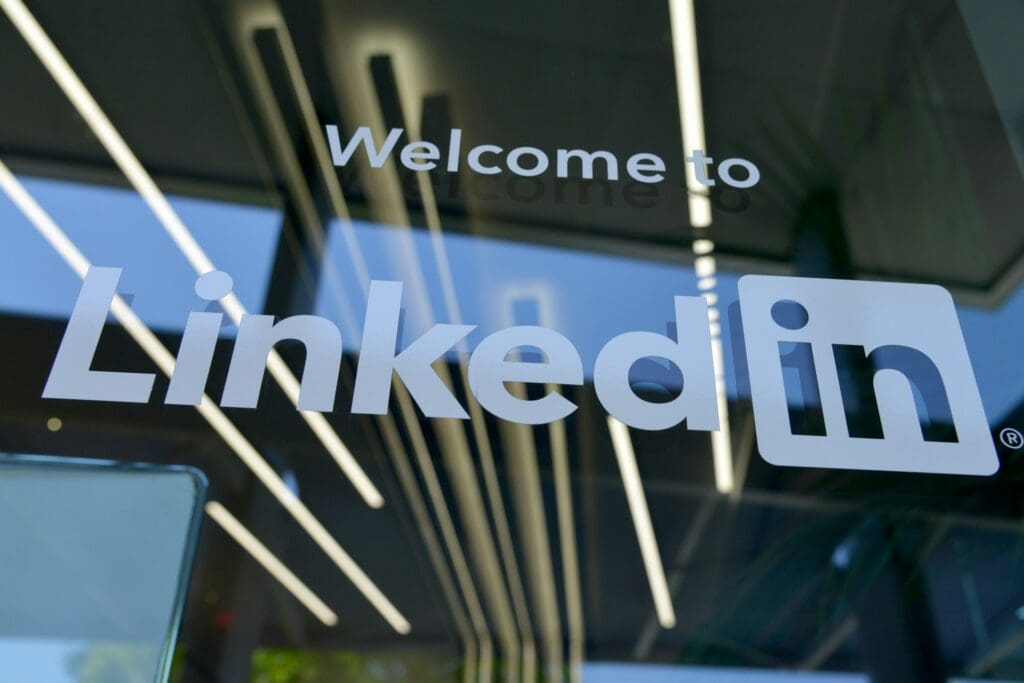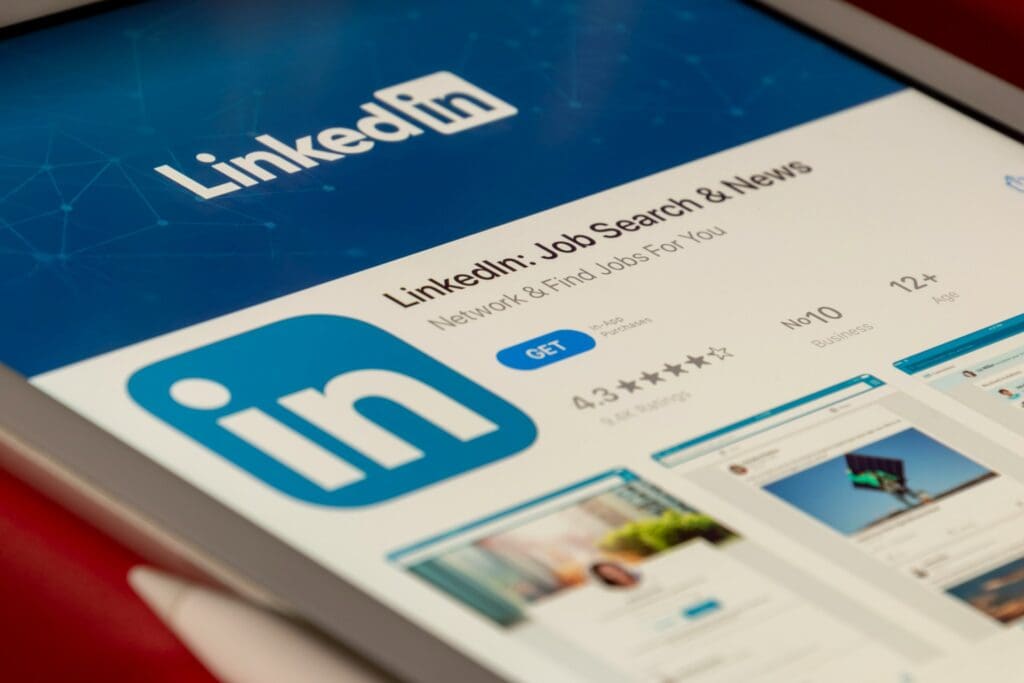
B2B social media primarily thrives on LinkedIn, which makes it a great place to create a company page. Company pages broadcast your messaging and brand to your followers, allowing your company to curate an audience and fans.
But what if you’re trying to connect with multiple audiences? And what if those audiences have different perspectives and interests from each other? Will one company page be enough to garner the audience you want, or will multiple company pages be needed to get your desired reach? Finally, how difficult is the upkeep for multiple pages?
As you can see, LinkedIn pages are a topic that can raise many questions. To deliver the answers you need for your business, we will be looking at the differences between one and multiple company pages in this article. We will look at the advantages and disadvantages of doing both so you can decide which method may be best for your social media needs.
Why do I need a LinkedIn company page?
LinkedIn’s algorithm excels at delivering relevant content to users’ feeds through intelligent segmentation. Every user profile holds ample data—skills, experience, industries of interest—allowing LinkedIn to recommend posts that align with those specifics. This personalized approach ensures your content reaches the right audience based on a user’s industry, skills, and interests laid out in their profile.
That’s what makes company pages work. These pages are already linked to specific industries, making them more likely to appear in searches and feeds for topics related to your field. Beyond visibility, company pages offer a strategic advantage: they serve as a hub for exploring and engaging with your industry’s key topics. You can create posts and articles that resonate by identifying shared interests and niches between your company and your audience. This connection helps you position your brand as a thought leader while offering valuable insights to your network.

Pros and cons of a singular company page
A singular company page provides a focused approach to your LinkedIn strategy, but it’s not without its challenges. Let’s dive into the benefits and drawbacks to help you determine if this is the right choice for your brand.
Pros
A single company page consolidates your audience and unifies your brand presence, making creating a consistent message across all your content easier. By managing one page, you can concentrate resources on crafting impactful posts and strategies, which also makes this option more cost-effective compared to maintaining multiple pages.
Tracking performance is simpler with all analytics in one place. Having centralized data allows for a clearer understanding of what’s working and where to improve. These insights can guide future decisions and strengthen your social media presence.
Additionally, a unified page fosters cross-industry interaction. Followers from various backgrounds and industries engage on the same platform, leading to dynamic discussions that bring fresh perspectives. This collaborative energy increases the reach and impact of your posts, spreading your content across a broader network.
Cons
For companies serving multiple industries or demographics, a single page can present challenges. It may be difficult to equally target all segments of your audience, leading to uneven engagement.
There’s also the risk of content overlap, where posts meant for one group are seen by another. This can confuse your audience or create disinterest if the content doesn’t resonate with their needs.
Furthermore, certain types of posts may naturally gain more traction than others, especially if one segment of your audience is more active. While focusing on high-performing content might seem like a smart move, it risks alienating less-engaged audience groups, potentially causing long-term declines in overall interaction.
The verdict
While these pitfalls can often be mitigated through research, careful planning, and audience engagement, they require experience and effort to avoid. Maintaining a singular page might feel limiting for companies with diverse audiences or objectives. So, is there another solution? Creating multiple company pages may be the best way to cater to various targets. Let’s explore this.

The pros and cons of multiple company pages
Having multiple LinkedIn company pages might be the key to building stronger connections for businesses catering to diverse industries, regions, or customer segments. However, this approach comes with its own challenges.
Pros
Multiple pages allow your brand to cater specifically to distinct industries, regions, or demographics. You can deliver a more localized and relevant brand experience by tailoring content to each audience. This not only boosts engagement but also strengthens trust and loyalty, as your audience feels understood and valued.
Localized pages also foster community. For instance, a regional page can celebrate local holidays, address unique trends, or highlight region-specific accomplishments. This approach resonates with that specific audience while avoiding confusion or disinterest from your broader following. Similarly, an industry-specific page can focus on niche topics that directly appeal to professionals in that field, keeping your content highly relevant and impactful.
Another advantage is the ability to track analytics separately. With distinct pages, you gain insights into each audience segment’s preferences, allowing you to refine your strategy and optimize your messaging for each demographic or region. This granular understanding can guide decisions, resulting in more personalized and effective campaigns.
Cons
The downside of multiple company pages is the increased effort they demand. Managing additional pages requires more resources, including time, personnel, and creativity. You’ll need diverse content tailored to each audience to keep each page active and engaging. Reposting the same content across all pages dilutes the purpose of having separate accounts and risks making your brand seem repetitive or inauthentic.
There’s also the challenge of maintaining a unified brand image. While personalized pages are excellent for targeting, they can make reinforcing your overarching company identity harder. Striking a balance between localized relevance and cohesive branding is crucial. Overemphasizing personalization risks losing sight of your company’s core message, while focusing too much on the broader brand image might alienate specific audience segments.
The verdict
Multiple LinkedIn company pages can be a powerful tool for businesses with diverse audiences but require careful planning and execution. To succeed, you’ll need to allocate adequate resources, ensure consistency in messaging, and actively engage with your audience on each page. Done right, this approach can amplify your brand’s reach and strengthen its connection with varied markets.

How Ready For Social can help optimize your LinkedIn strategy
Managing a successful LinkedIn presence through a single company page or multiple specialized pages requires time, consistency, and a clear content strategy. This is where Ready For Social comes in. By streamlining the creation, curation, and distribution of corporate posts, our team empowers businesses like yours to enhance their LinkedIn performance with ease and efficiency.
- Tailored content for your audience: Ready For Social helps you craft and schedule posts that resonate with your audience, whether targeting a global market or niche industries. Use our tools to share insights, promote thought leadership, and keep your audience engaged.
- Consistent branding across pages: Our platform ensures consistent messaging across all accounts while allowing you to tailor posts for specific segments. This balance keeps your brand voice strong and relevant to diverse audiences.
- Data-driven decision making: Ready For Social’s analytics track post-performance, helping you identify what works and refine your strategy for maximum engagement.
- Save time and resources: Streamline your workflow with tools to schedule posts, automate tasks, and curate content efficiently, freeing up time for creative strategy.
- Engage your audience effectively: Schedule posts at optimal times and share valuable content to strengthen audience connections and expand your reach.
- The Ready For Social advantage: Whether managing one page or several, Ready For Social simplifies your LinkedIn strategy, helping businesses of all sizes build stronger relationships with their audience, grow their reach, and achieve measurable results on LinkedIn.
Making the right choice for your brand
Both approaches to building a LinkedIn presence—maintaining a singular company page or creating multiple specialized pages—come with distinct advantages and challenges. The best choice ultimately depends on your company’s resources and goals.
If your team lacks the capacity to manage multiple profiles, a single, well-maintained page can effectively represent your brand while catering to diverse audiences through strategic, varied content. On the other hand, if your audience is too diverse or broad to address with one profile—and you have the resources to manage additional pages—multiple profiles may be the way to go.
The key is aligning your decision with your company’s capabilities and strategic priorities. Whatever path you choose, preparation, thoughtful planning, and consistent engagement are critical to achieving LinkedIn success.
Are you still trying to decide the best approach for your company? Or are you looking for ways to avoid common pitfalls? We’re here to help! We’d love to hear from you and help guide your LinkedIn strategy.
